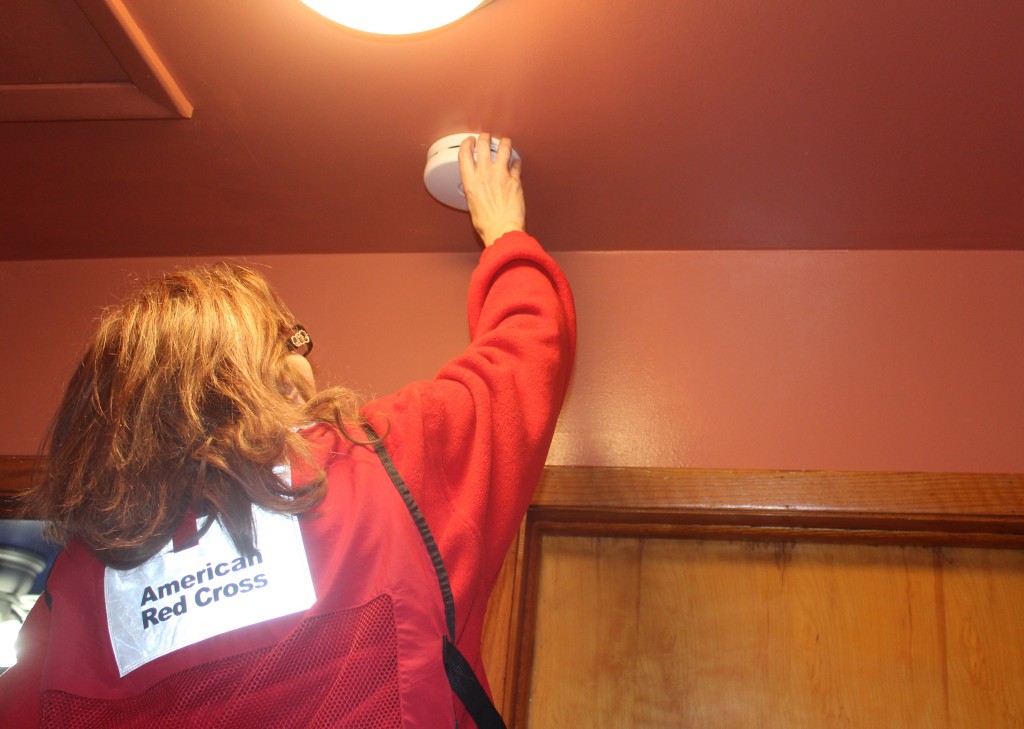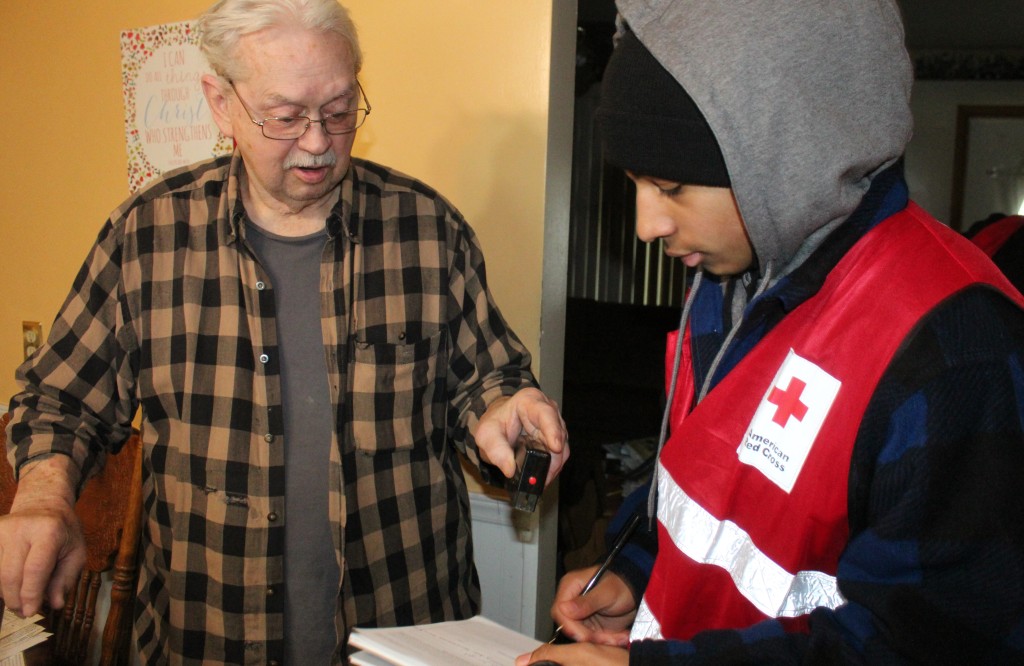By Eilene E. Guy, American Red Cross volunteer
While preparing the Thanksgiving feast, has anyone in your family ever burned something on the stove, setting off the smoke alarm and forcing you to open windows to the chilly November air?
My family has!
Have you every grabbed a potholder to pull a dish out of the oven, only to discover someone left it wet and the steam instantly scalded your hand?
I have!
These kitchen mishaps are not uncommon. But sadly, some holiday accidents turn disastrous: Thanksgiving and the day before are the top two days for home fires in this country.
Cooking is the leading cause of home fires and home fire injuries, and the second leading cause of home fire deaths. Most cooking fires happen because people leave cooking food unattended. (In my family, it was scorched green beans. I’m thankful the damage was just smoke.)
The American Red Cross urges everyone to keep safety top of mind throughout the hectic holiday season (and beyond):
Stay in the kitchen, especially when you’re frying or broiling food. If you have to leave the kitchen for even a short time, turn off the stove.
The same goes for a grill or turkey fryer outside. Don’t leave them unattended.
Use a timer to remind yourself that the stove or oven is on.
Don’t wear loose clothing or dangling sleeves while cooking.
Keep kids and pets at least three feet away from cooking areas.
Keep anything that can catch fire — potholders, oven mitts, wooden utensils, paper or plastic bags, food packaging, towels or curtains — away from your stove top and oven, or any other appliance that generates heat.
Clean cooking surfaces regularly to prevent grease buildup.
Consider getting a fire extinguisher to keep in the kitchen.
Always check the kitchen before leaving home or going to bed to be sure all stoves, ovens and small appliances are turned off.
Remember my smoke alarm? Smoke alarms save lives. Install a smoke alarm near (but not in) your kitchen, on each level of your home, near sleeping areas, and inside and outside bedrooms if you sleep with doors closed. Use the test button to check them once a month. Replace all batteries at least once a year (unless you have newer alarms with 10-year batteries).
If you can’t afford to buy smoke alarms or you’re physically unable to install them, the Red Cross may be able to help. Contact your local Red Cross for more information.
One more thing: Does everyone in your family know what to do if you do, in fact, have a home fire? Visit redcross.org/fire for more safety information, including a fire escape plan to practice with your family.
Since October 2014, the Red Cross Home Fire Campaign, working with community partners, has saved at least 1,994 lives by educating families about fire safety, helping them create escape plans and installing free smoke alarms in high-risk areas across the country. To learn more about the campaign and how you can get involved, visit redcross.org/homefires.
Posted by Ryan Lang, Red Cross board member and volunteer
Edited by Glenda Bogar, Red Cross volunteer























